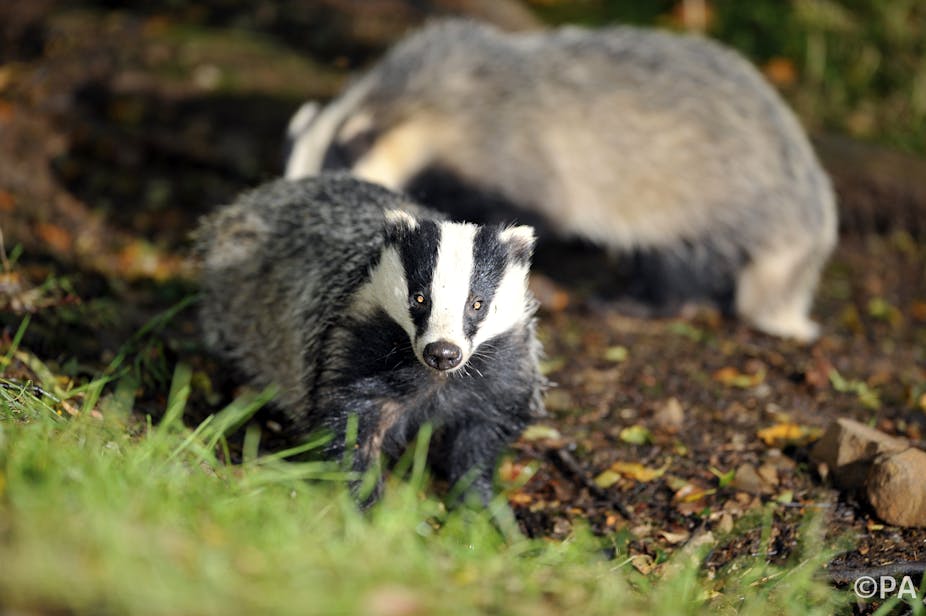Badgers in the UK are an important wildlife reservoir for bovine tuberculosis, a disease that leads to the slaughter of thousands of cattle each year at a significant cost to the tax payer. But the badger cull that has taken place, and looks set to continue, is playing into one of the complexities of badgers’ lives that has made tackling the disease difficult.
As part of our research I fitted proximity-logging collars to 51 badgers to follow them during their day-to-day social lives. By tracking their movements we could investigate whether an individuals’ infection with TB influenced their lives, and those of fellow badgers. These state-of-the-art devices track the animals’ location, and record the interactions of animals wearing them when they come within a pre-defined distance of each other, in our case 64cm - about a badger-length.
The first part of the study, published in the journal Behavioral Ecology and Sociobiology, showed that badgers that strayed away from their social groups’ main burrow (known as a sett) in favour of sleeping in outlying setts were more likely to carry TB.
Taking this a step further, our subsequent article published in Current Biology showed how these patterns of movement within the sett are related to interactions among badgers within their social group, but also between those from different groups. We found that badgers infected with TB were less well connected with their own social groups compared to those that were uninfected. These infected badgers were more prone to form social links with badgers from other groups, and this is what facilitates the transmission of TB infection across badger populations.
For all sorts of epidemics in wildlife and in humans, such as the common cold, some individuals are known to behave in a particular way that makes them more likely to spread or contract the disease. It’s been acknowledged for some time that individual badger behaviour is likely to be a key factor in how the disease spreads and is transmitted to livestock. The evidence that this research has provided underpins previous observations of the counter-productive effects of culling.

Professor Robbie McDonald who supervised this work alongside others at the University of Exeter and AHVLA’s National Wildlife Management Centre, refers to infected badgers in this system as “spread capacitors”. In a similar fashion to the electronic capacitor, they are passive components that are able to hold and discharge infection, but tend to stabilise rates. In contrast, a badger that is highly socially mobile acts as a “super spreader”, infecting others disproportionately because of their high social connectedness in the network.
In another aspect of the study, led by our collaborator Dr Julian Drewe from the Royal Veterinary College, the proximity-logging collars were also fitted to cattle gazing near to the woodland where the same collared badgers lived.
This revealed that direct contact between badgers and cattle on pasture in Woodchester Park, Gloucestershire (an area with a fairly high density badger population that has been intensively studied) was relatively rare despite ample opportunity. However, indirect visits by both species to badger latrines (a single point outside the burrow where badgers, tidy animals, keep their droppings) were significantly more common. This suggests that it is these and perhaps other indirect contact away from pasture, for example in farm buildings, that is the common route of TB transmission.
Taken together these findings suggest that efforts to manage the spread of tuberculosis are likely to be most effective when badgers’ social structure is maintained. The “peturbation effect” evidenced by disturbances such as culling, may break down badgers’ social groups. This leads badgers, including infected individuals, to scatter and perhaps further spread infection. With that in mind it is badger vaccination that may have the best chance of disrupting the flow of the disease, without disturbing the badgers’ networks and risking further, more widespread infection.

